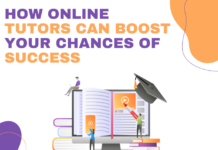Learning how to read doesn’t happen automatically. It’s a process that involves acquiring different skills and using a strategic approach. The earlier kids start learning this important life skill, the higher their chances of excelling in academics and other areas in life.
According to one study, kids as young as four years can start learning comprehension skills. At this age, a child’s brain develops fast, so it’s an ideal time to start teaching them how to read. Here are four tips teachers and tutors can use to teach kindergarteners how to read.
Table of Contents
How to Teach Reading to Kindergarteners
1. Teach Uppercase Letters First
Uppercase letters are bold and easy to identify. They stand out in text when used alongside lowercase letters. It’s the main reason tutors use them to teach kids yet to join formal schooling.
For example, compare the letters “b,” “d,” “i,” and l” to “B,” “D,” “I,” and “L.” The former can be challenging for a kindergartener to understand. Teach uppercase letters first, and when your students master them, incorporate lowercase letters in your lessons. Remember, most of the text they’ll read will be in lowercase.
2. Focus on Letter Sounds
Once your students know what lowercase and uppercase letters look like, shift the focus to letter sounds instead of names. The analogy is simple. Take, for example, the sound of the letter “a” in the word” call.” Here the letter “a” sounds like /o/. This concept can be challenging for small kids to master.
Instead of teaching letter names, help them understand how the letters sound in text. Teach them how to deduce the sound of a word when they encounter a new word. The letter “a” sounds different when used in the words “wall” and “yawn.” Think along those lines as you teach letter sounds. For example, you can teach them the letter “c” makes the sound /c/. Don’t dwell on the name of the letter.
3. Leverage the Power of Technology
Kids love gadgets. They give the instant gratification they long for. You can use digital gadgets like iPads and tablets to make reading more enjoyable and keep your students engaged. There are many reading programs for kindergarteners that can arouse their eagerness to learn.
Download voice reading apps and other text-to-speech programs and incorporate them into your reading lessons. Play audio text out loud and let students follow along on their digital screens. This is also an effective strategy to teach comprehension skills to kids with dyslexia or any other learning disability.
4. Be Patient with Learners
No two students are alike. Also, there isn’t one strategy for teaching reading to kindergarteners. What works for one child may not work for the other. For instance, some students learn better by observing, while others may need to use both sight and phonics to learn how to read.
It’s up to you, the teacher, to assess each student and know what works for them. Let them learn at their own pace. Don’t make reading feel like a task. Use different strategies and your students will master reading in no time.


